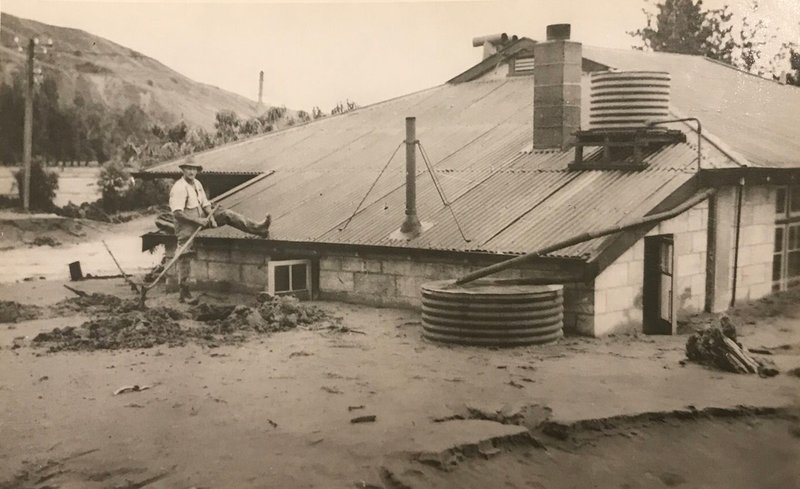30 Mar 2023
Tropical Cyclone Gabrielle was an historic event, causing widespread damage and the tragic loss of 11 lives. Kiwis from all walks of life have been affected, including our members, and engineering professionals will be closely involved in the recovery at all levels – from rebuilding damaged infrastructure to simply picking up a shovel and mucking in with their neighbours.
Recently we spoke with Simon McLoughlin from Triskelion Design Engineers in Hawkes Bay.
Simon and his family were evacuated on the day of the cyclone and got back to their house the next day. He said, “The water came very close and the garden was pretty water-logged, but our house was okay. A foot higher and it would have been in the house.” Other parts of the neighbourhood were badly flooded, “including houses on the far side of the road from us.”
Simon and his wife got in touch with the local school which was putting together some working bees. “We helped clear out people’s belongings then got to work shovelling out silt. Later we helped to remove water-damaged linings from people’s homes as well.”
He says the community spirit really shone. “There were a lot of people doing what I was doing – picking up their shovels and getting stuck in.”

Scenes after the 1938 flood in Esk Valley. Image: Evening Post, Volume CXXV, Issue 99, 29 April 1938, page 10
Simon lives about a kilometre away from Brookfield Bridge, the one-lane bridge into Pakowhai that collapsed. The Pakowhai community was even more severely affected. “On our side there was about half a foot of silt in most of the houses, but when we started helping on the Pakowhai side of the bridge we could see houses where the waterline was only a metre below the apex of the roof,” he said. “I talked to a husband and wife who were on top of their roof with their three kids for eight hours waiting to be rescued.”
The experience also drove home the importance of having a proper survival kit. “The government tells you to have a radio for emergencies and I had always just thought I could use the radio in my car. But you can’t have the car running all day just to listen to the radio.”
The near-total lack of communications was also a challenge, with no phone reception most of the time. “You couldn’t get online, so we weren’t seeing a lot of information in the media that people in the rest of the country were seeing… Things like information about which bridges were gone was all word of mouth.”
The government tells you to have a radio for emergencies and I had always just thought I could use the radio in my car. But you can’t have the car running all day just to listen to the radio.
When asked about the biggest engineering challenges of the rebuild, Simon replied, “We need to find ways of making sure that the next time an event like this happens it won’t be as devastating.” And similar floods have happened before – including in 1938, in Eskdale. “Lessons from that obviously weren’t learned, with houses still being built in those areas after that event,” he says.





